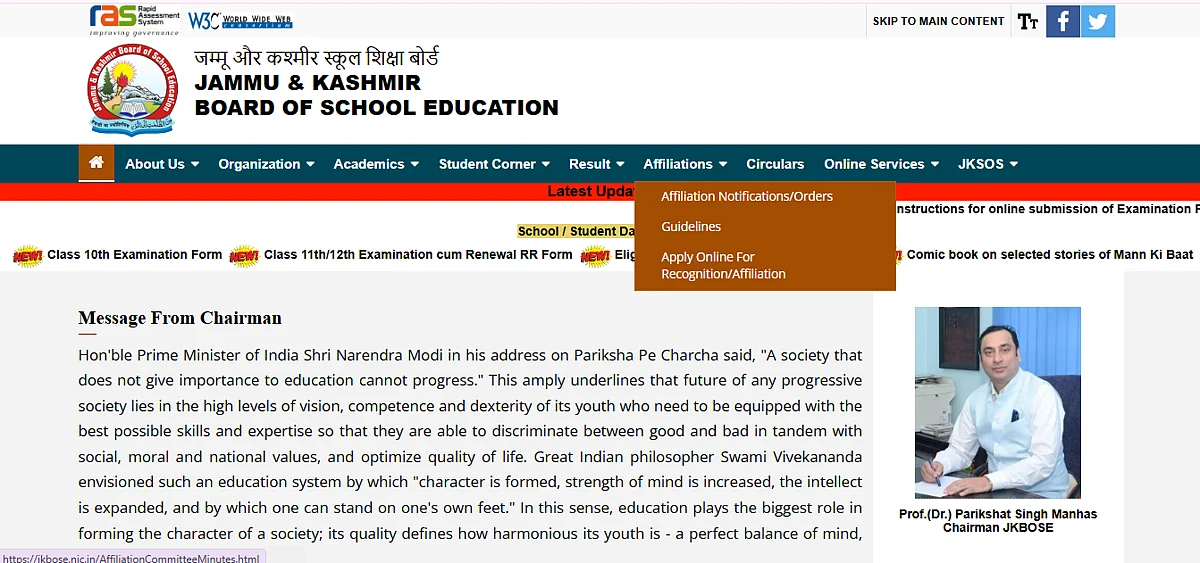National Aeronautics and Space Administration (NASA) Administrator Bill Nelson as part of his maiden visit to Mumbai on Friday, said NASA is working on locating another planet like Earth which can support life. “There are millions of galaxies, stars, and suns in the universe. If there's any planet which is not too close to the sun or far from it, and also has water and carbon, our scientists think there is a possibility of another earth,” said Nelson.
The administrator's visit comes amid the growing interest and investment in space exploration with India. Both nations have collaborated on a commercial project NASA-ISRO Synthetic Aperture Radar (NISAR) observatory, a $1 billion spacecraft, which is scheduled for launch in the first quarter of 2024. The two nations are also working on various space initiatives, including a joint India-US spaceflight, the Gaganyaan project, and cooperation in areas like radiation impact studies in space health. Nelson announced that as part of this joint project.
Nelson said NISAR is a three-week composite model which will observe what's happening on the Earth's surface. We want to preserve our home, the planet Earth. It will observe everything on the earth's surface and see if we can change anything,” said the administrator. “The first international project which we go a year from now will have an international crew and once we enter into the orbit around the moon, then four international astronauts on the third mission will be landing on the moon and that will be a commercial landing. We have commercial rockets by Space X. The first astronaut to land on the moon as part of the project will be a woman after Gene Cernan,” Nelson said.
On NASA's interest in collaborating with ISRO, Nelson said the decision was made a decade back because America back then knew the technical capabilities of Indian scientists. “India has the expertise and we wanted to bring that closure as an opportunity between India and the US. As part of the project, one Indian astronaut will be trained by NASA and fly to the International Space Station (ISS) in 2024 and conduct research for 10 days to two weeks. It's another reason that NASA has such confidence in ISRO and Indian scientists and it is important for two key governments,” Nelson said.
Nelson is the second sitting member of the United States Congress and the first member of the House to travel into space. Nelson took a space flight in the Space Shuttle Columbia's STS961-C mission in 1986 after Rakesh Sharma, the first Indian to fly to space in 1984. The administrator met Sharma on Thursday at ISRO in Bengaluru. “I met him after decades but we picked up from where we left. He went to space first with a Soviet rocket but still, we hit it off well,” Nelson said.
Talking about whether the two explosions of Artemis 1 last year will have an effect on the Artemis 2 and 3 planned for launch in 2024 and 2026, the administrator said, “The Artemis 2 is not going to land on the moon. It's going to circle and check the spacecraft and life support system and international crew and that will fly next year. Two of the crew will climb into the lander at lunar orbit. They will go down and land and sail the surface for six days. That will be the first woman,” he said.
Nelson also applauded India's historic achievement with the successful soft landing of the Chandrayaan-3 spacecraft on the Moon's south pole. India became the first nation in the world to reach the lunar south pole and fourth after the US, China, and the erstwhile Soviet Union to reach the Moon. “My congratulations to India. No one else has done that. Others have tried, and have failed, but India has done that successfully. It's a significant accomplishment,” he said.











